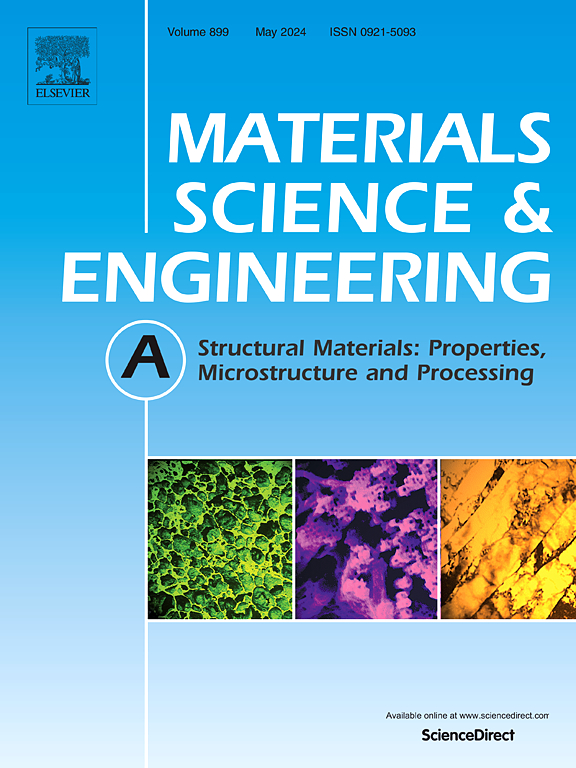Dynamic mechanical properties and microstructure evolution of high-entropy alloy Al0.3CoCrFeNi: Effects of strain rate, temperature and B2 precipitates
IF 6.1
2区 材料科学
Q1 MATERIALS SCIENCE, MULTIDISCIPLINARY
引用次数: 0
Abstract
The mechanical properties and microstructural evolution of solution-treated and aged Al0.3CoCrFeNi high-entropy alloys (HEAs) are systematically explored. The solution-treated alloy exhibits a single face-centered cubic (FCC) phase, whereas the aged alloy displays striped B precipitate bands rich in Al and Ni. Uniaxial compression tests are conducted in a strain rate range of 10-3–2700 s−1 and a temperature range of 173–693 K for both types of the alloys. At a constant temperature or strain rate, yield strength increases with increasing strain rate or decreasing temperature. The aged alloy demonstrates a slightly higher yield strength due to the presence of B precipitates giving rise to precipitate strengthening and enhanced deformation twinning. The investigation reveals multiple deformation mechanisms in both alloys, including dislocations, stacking faults, immobile Lomer-Cottrell locks, kink bands and deformation twins. Dislocations are along the {111} slip planes in the solution-treated alloy in contrast with tangled dislocations in the aged alloy. Besides, B precipitates, lower temperatures or higher strain rate all facilitate the activation of deformation twinning. Additionally, a modified Johnson-Cook-Cowper Symonds (JC-CS) constitutive model is developed, effectively capturing the plastic flow behavior of both alloy types across a broad range of strain rates and temperatures.
求助全文
约1分钟内获得全文
求助全文
来源期刊

Materials Science and Engineering: A
工程技术-材料科学:综合
CiteScore
11.50
自引率
15.60%
发文量
1811
审稿时长
31 days
期刊介绍:
Materials Science and Engineering A provides an international medium for the publication of theoretical and experimental studies related to the load-bearing capacity of materials as influenced by their basic properties, processing history, microstructure and operating environment. Appropriate submissions to Materials Science and Engineering A should include scientific and/or engineering factors which affect the microstructure - strength relationships of materials and report the changes to mechanical behavior.
 求助内容:
求助内容: 应助结果提醒方式:
应助结果提醒方式:


